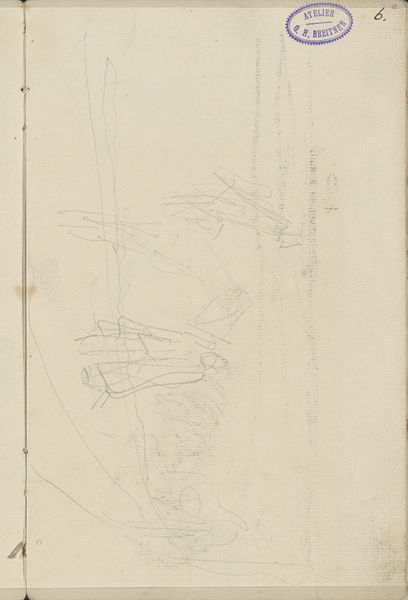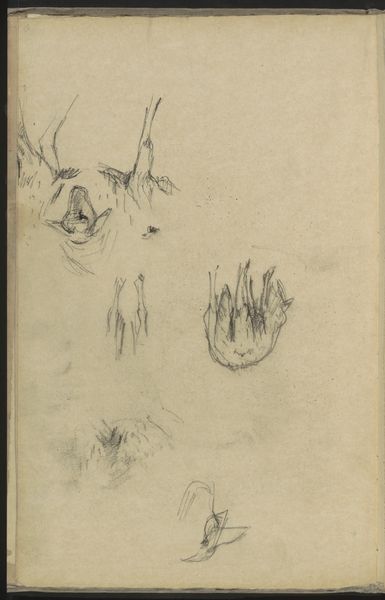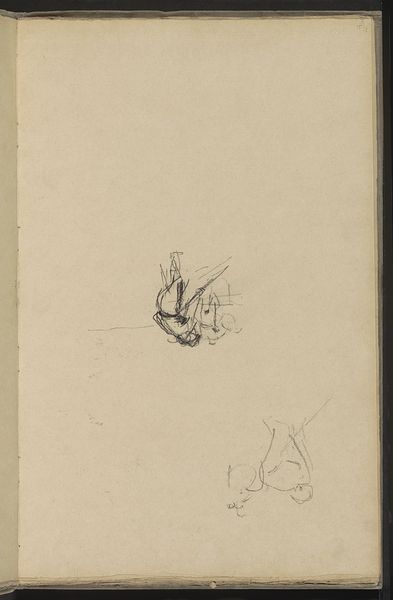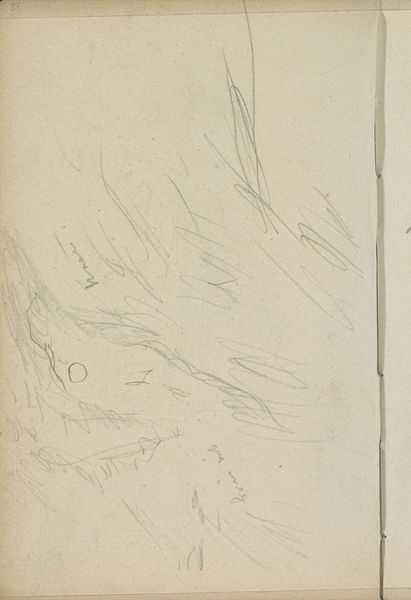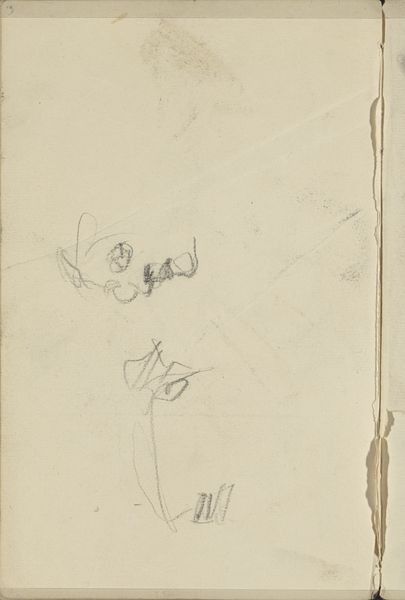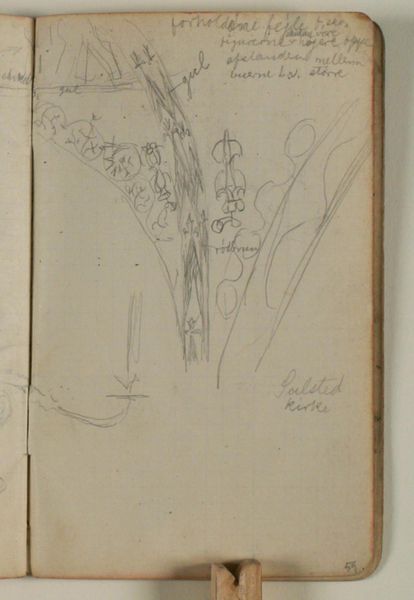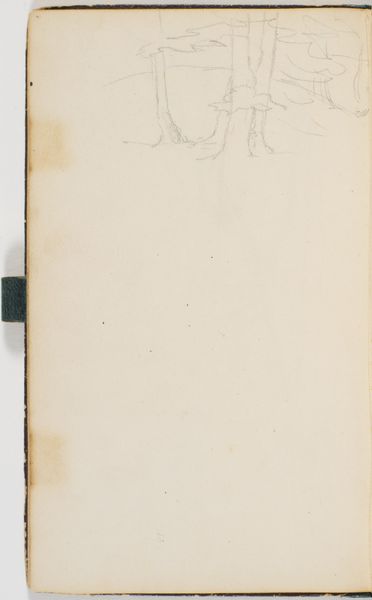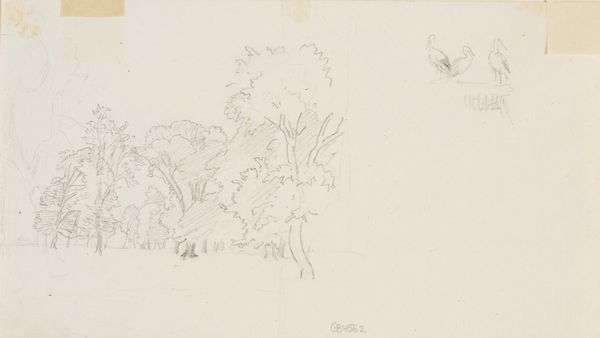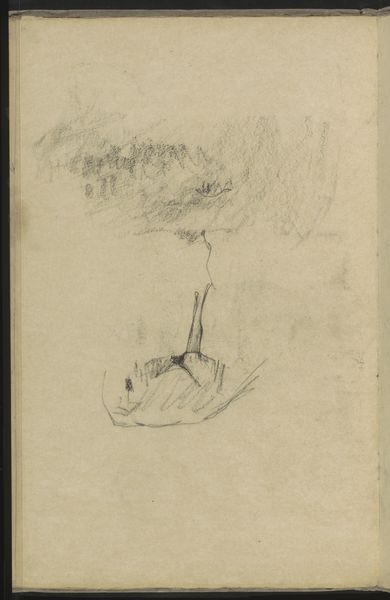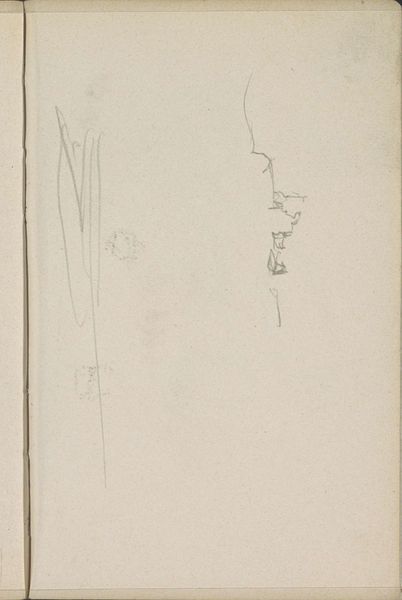
drawing, paper, pencil
#
drawing
#
landscape
#
paper
#
coloured pencil
#
pencil
#
watercolor
#
realism
Dimensions: 204 mm (height) x 115 mm (width) (bladmaal)
Curator: Welcome to this contemplative corner of the gallery. Here, we encounter "Græstrå og siv," or "Straw and Reeds," an 1873 drawing on paper by P.C. Skovgaard. Editor: My immediate response is one of tranquility. There's a quiet, almost hesitant quality to the strokes, as though the artist were trying not to disturb the very scene he's capturing. Curator: Precisely. Skovgaard's restrained use of line, largely employing pencil and what appears to be colored pencil, invites close inspection of form. Note how the verticality of the reeds is established by the subtle modulations in line weight. Editor: I see it as something more, though. Landscape art, especially at this time, was deeply intertwined with national identity. Were these simple studies of nature also symbolic claims to territory, to a Danish identity rooted in the land, especially in the context of political tensions of the time? Curator: It's certainly a perspective worth considering. His masterful use of the pencil builds texture in the strokes; in particular, there is careful differentiation of tone in the grasses and reeds. Do you think this differentiation can point towards Skovgaard as making some sort of political argument? Editor: Perhaps, it seems less deliberate and more an attempt to reflect nature in all its nuances, to cultivate pride of its understated beauty. Did this simplicity become associated with ideas of “the folk” versus cosmopolitan elitism? Did this become the subject of debate? Curator: That's an interesting perspective and there's certainly been significant debate about it. And yet, I can still come back to the pure compositional elements of realism: Skovgaard isn't imposing a narrative as such; rather, we see the landscape in a series of studies. Note how he divides the drawing into various groupings of straw and reeds, and these become small self-contained landscapes. Editor: Agreed, the composition, for its simplicity, makes "Straw and Reeds" all the more profound. A quiet assertion of place, identity, and belonging—drawn not with grand gestures, but with the intimacy of observation. Curator: Well said. And a subtle study that also illustrates how simplicity can be charged with complexities.
Comments
No comments
Be the first to comment and join the conversation on the ultimate creative platform.

